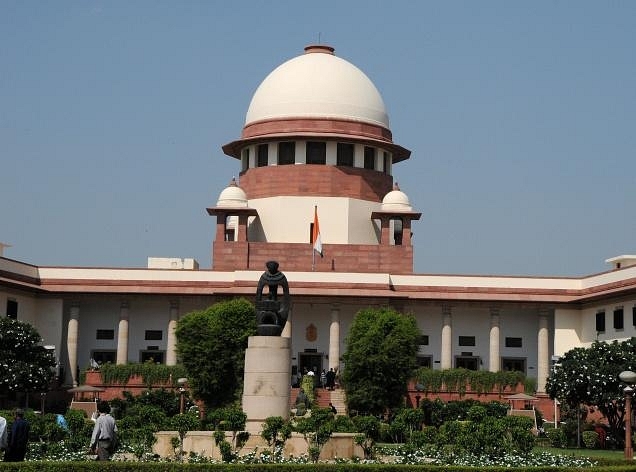
Why India Needs The NJAC
There are 3.2 crore cases pending in Indian courts.
That is what the then Union Minister of Law and Justice, Kapil Sibal told the Lok Sabha in 2013. There is no reason to believe that that number has decreased drastically in two years. Besides, when 3.2 crore cases are pending, even a drastic decrease would still leave more than a crore cases pending adjudication.
The reasons for that are all too well known:
a) There are not enough judges in our courts.
b) Not all of them work as they should.
In fact, the notoriety surrounding our judges has snowballed with time. As senior advocate Dushyant Dave, speaking on behalf of the Supreme Court Bar Association (SCBA), told a Supreme Court bench:
“My Lords should wear a burqa and roam in the court corridors to hear the way lawyers talk about the judges of this court. You will get first-hand account of the rotting justice delivery system. The kind of lawyers who are being appointed as judges is a disgrace”
The system which makes such appointments is the collegium system of the judiciary. This is a group comprising of the Chief Justice of India and four other judges which makes its recommendations to the President of India. In fact, India is in a minority in being a democracy where judges appoint other judges themselves.
To correct this, the central government introduced the National Judicial Appointments Commission (NJAC) via a constitutional amendment. This commission replaces the collegium and comprises of:
— The Chief Justice of India
— Two other judges of the Supreme Court
— The Union Minister for Law and Justice
— Two eminent persons as recommended by a three-member committee of the CJI, the Prime Minister and the leader of the opposition in the Lok Sabha.
The Commission came into effect from April 13, 2015.
Given the fact that India’s judicial system is crippled to the verge of being non-existent, one would expect that the NJAC would have been welcomed by all.
It was not so. In fact there were multiple pleas submitted in the Supreme Court which argued against the implementation of the NJAC. This has led to a situation where the judges, who can themselves be regarded as a party in the issue, are adjudicating upon its validity.
To prove why the NJAC is necessary and why the collegium system should be disposed with, here are a few examples:
— In a country where there is a backlog of 3.2 crore cases in the judiciary, one judge of the Supreme Court wrote only seven judgements in four years. Out of that two were concurring where he wrote only a few paragraphs.
— One judge was notorious for turning up late to the court more often than not. Despite this being well known he was appointed to the Supreme Court.
— A High Court judge was elevated to the Supreme Court allegedly only because he was the business partner of the son of a former Chief Justice of India.
— The sister of a former CJI was appointed to Calcutta High Court when allegedly many fine judges were denied the appointment.
— Many judges were appointed to the Supreme Court by the Collegium despite the Intelligence Bureau (IB) giving an adverse report on them.
Given such examples, the NJAC seems like a welcome and much-needed solution. On its part though, the NJAC needs to ensure that while it puts in place a non-corrupt, efficient way of appointing judges, it is not seen as interfering in the working of the judiciary.